Press Release
Artmarket.com: an analysis by Artprice of the Marcel Duchamp Prize awarded by ADIAF, reinvigorating dynamism in the French contemporary art scene on an international scale

[ad_1]
PARIS, Oct. 2, 2023 /PRNewswire/ — The Marcel Duchamp Prize is a distinction created 23 years ago at the initiative of French art collectors and the ADIAF (Association for the International Diffusion of French Art). It was created by collector Gilles Fuchs (amongst others) in response to a very clear shrinkage of the influence of French artists at the international level in the 1990s. Its mission was quite simply to rescue French art by generating an environment more conducive to the emergence of French artists in what was then a very delicate context for the French Contemporary art market.
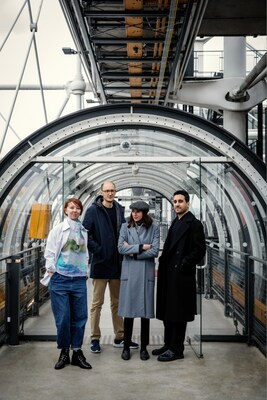
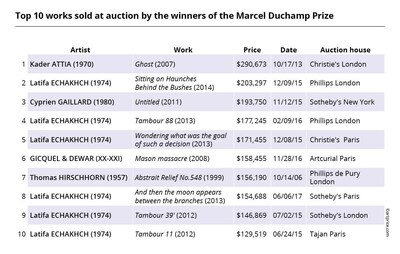
“For over two decades, the Marcel Duchamp Prize has become an essential reference in the world of Contemporary art, but beyond the prestige of the prize itself, the ADIAF plays a pivotal role in elevating the French art scene on a global scale and providing vital support for French artistic expression.” thierry Ehrmann
Every year, the Marcel Duchamp Prize highlights French artists or artists working in France during the FIAC, now Paris+ by Art Basel. Since 2016, the finalists have been given a substantial spotlight (often their first) at a strategic moment in the international Contemporary Art calendar: their works are shown at the Pompidou Center for three months in an exhibition area of 650 m2 (previously, they were exhibited at the FIAC and only the winner benefited from an exhibition at the Center Pompidou). This exposure in one of France’s top museums is already a major boost for their careers, but the ADIAF also deploys other strategies to promote young hopefuls from the French scene on the international stage.
The impact of the Duchamp Prize
On top of a substantial financial reward for the finalists (90,000 euros, including a prize of 35,000 euros for the winner), the winner also benefits from a research residency in the United States at the Villa Albertine. Indeed, beyond the allocation of a prize and the one-off exhibition, the Marcel Duchamp Prize aims to be a complete system of support for artists in their careers. The idea is to promote the French art scene in the world via international exhibitions organized in partnership with foreign museums and with the support of the Institut Français. More than 50 Marcel Duchamp Prize artists and 140 major works have benefited from visibility during some 20 exhibitions organized in major museums around the world, in Buenos Aires, Beijing, Shanghai, Los Angeles, Seoul, and Berlin, among other places. The professional networks established with the Marcel Duchamp Prize can constitute important springboards. This represents invaluable support because while obtaining a Prize always constitutes a positive argument in the career of an artist by boosting his/her legitimacy, it is above all the meetings with collectors and the exhibitions generated as a result that will increase, in the long term, the artist’s notoriety and market prices.
Prize recipients: whats it worth?
It is difficult to assess the immediate impact of winning the Marcel Duchamp Prize on the artists’ market prices. Although it is clear that obtaining such an award does indeed sharpen the interest of collectors, the galleries are the first beneficiaries of this momentum, since the Prize does not necessarily trigger an acceleration of transactions on the auction market (which is essentially a ‘secondary’ market).
Among the big names who have received the Marcel Duchamp Prize in the past, Dominique Gonzalez-Foerster, Laurent Grasso, Tatiana Trouvé, Mircea Cantor, and Kader Attia, have established themselves as artists of international quality and are sought after by major collectors. However, the auction market does not always reflect the quality of their careers or of their works.
While the works of Dominique Gonzalez-Foerster (2002 winner), for example, have been acquired by several major museums including the Tate Modern (London), the Dia Art Foundation (New York), and the Pompidou Center in (Paris), her works are extremely rare in at auction; and when they are presented, they are not necessarily indicative of the artist’s interdisciplinary practice, which encompasses cinema, installation, video and various forms of collaborative work. Her auction record of $23,410 in a Christie’s sale in London (Multiverse, 2004-2012) has not been renewed since 2012 – more than ten years ago – a significant amount of time in the dynamics of the Contemporary art market. Indeed, some winners like Clement Cogitore (2018 winner) have never seen their works offered at auction, or have not yet found their audience in the art market, like Julien Prévieux (2014 winner).
Other artists, when supported by particularly powerful international galleries, enjoy more sustained auction activity. This is the case of Tatiana Found (supported by the Perrotin, Paris; the Gagosian, New York and Johann König, Berlin), Cyprien Gaillard (supported by Gladstone, New York and Sprüth Magers, Berlin), Laurent Grasso (supported by Perrotin, Paris and Sean Kelly, New York) or even Latifa Echakhch (supported by Kamel Mennour, Paris; Kaufmann Repetto, Milan; Dvir Gallery, Tel Aviv and Eva Presenhuber, Zurich), all ranked in the 10,000 top-selling artists at global auctions.
Tatiana Found (2007 winner) and Latifa Echakhch (2013 winner) have both already ranked among the 5,000 top-selling artists on the global market and have in common auction records dating back to 2015. Tatiana Found’s installation Untitled (ref: cable 9) sold for $67,000 at Phillips in London, and, a few months later, a painting by Latifa Echakhch fetched $203,300 at the same auctioneer after being part of the collection of Dr. Frederic S. Brandt in Miami. The young Latifa Echakhch, today sought after by international collectors, has been crowned by eight auction results above $100,000.
Other winners have sold above this price level, a significant and rare level for young French artists indeed. They include Cyprien Gaillard (2010 winner) whose peak currently stands at $193,750. Again, his record also dates back to 2015 (like those of Tatiana Trouvé and Latifa Echakhch), but Cyprien Gaillard’s was hammered at Sotheby’s New York and not in London.
Kader Attia (2016 winner) also distinguished himself by the sale of two installations for over $100,000 before obtaining his Duchamp Prize in 2016, the only prize with which he had been honored until then. Thomas Hirschhorn (2000 winner) has an auction record of $156,190 following the sale in 2006 of a large mixed-technique entitled Abstract Relief No.548 (1999) at Phillips de Pury & Company in London. His first works went to auction in 2001, a few months after winning the Duchamp Prize, and his demand has become global with 76% of his turnover being hammered in the United States.
Award-winning artists accessible on the auction market
Many of these French artists, whose talent has been confirmed by winning the Duchamp Prize, have works that are accessible for under $5,000 at auction. This is the case for Carole Benzaken (2004 winner), whose biggest paintings exceed $15,000; Thomas Hirschhorn (2000 winner), 62% of whose works sell between $1,000 and $5,000; Matthew Mercier (2003 winner), half of whose works sell for between $1,000 and $5,000 at auction. Likewise for Joana Hadjithomas and Khalil Joreige (2017 winners), whose politically motivated works – attempting to reveal history’s underbelly and question the standard representation of conflicts – have been exhibited at several art biennials and in museums as important as the Solomon R. Guggenheim (New York) and the British Museum (London). They have also been integrated into several large private and public collections, but still remain affordable at auction.
It is clear that solid international recognition does not always have a major impact on the auction market. Informed collectors deal directly with galleries and the prices of artists evolve confidentially, especially for works that are often transversal, atypical and do not necessarily conform to trends in global demand.
The winners of the Marcel Duchamp Prize
Thomas Hirschhorn (2000 – 2001)
Dominique Gonzalez-Foerster (2002)
Matthew Mercier (2003)
Carole Benzaken (2004)
Claude Closky (2005)
Philippe Mayaux (2006)
Tatiana Trouvé (2007)
Laurent Grasso (2008)
Saâdane Afif (2009)
Cyprien Gaillard (2010)
Mircea Cantor (2011)
Daniel Dewar and Grégory Gicquel (2012)
Latifa Echakhch (2013)
Julien Prévieux (2014)
Melik Ohanian (2015)
Kader Attia (2016)
Joana Hadjithomas and Khalil Joreige (2017)
Clément Cogitore (2018)
Eric Baudelaire (2019)
Kapwani Kiwanga (2020)
Lili Reynaud Dewar (2021)
Mimosa Echard (2022)
The nominees for the 2023 Marcel Duchamp Prize
Claude Bonnin, President of ADIAF, will reveal the name of the winner on 16 October following the vote of an international jury composed of Xavier Rey, Director of the National Museum of Modern Art (Pompidou Center), Claude Bonnin, collector and President of the ADIAF, Akemi Shiraha, representative of the Marcel Duchamp Association, Dr. Jimena Blasquez Abascal, collector and Director of the Montenmedio Contemporary Foundation (Spain), Josée Gensollen, collector of the Gensollen La Fabrique Collection in Marseille, Béatrice Salmon, director of the National Center for Visual Arts (CNAP) and Adam D. Weinberg, Director of the Whitney Museum of American Art, in New York.
The finalists’ exhibition is open for three months at the Pompidou Center in Paris.
Here are the four artists in the running for the 23rd edition of the Marcel Duchamp Prize:
Bertille Bak https://www.adiaf.com/artistes/bertille-bak/
Born in 1983 in Arras (France), lives and works in Paris
Represented by Xippas Gallery, Paris, and The Gallery Apart, Rome
“Bertille Bak focuses on communities by examining their rituals, gestures, and objects which she later uses in her projects. Whether it is her own community in the mining areas of northern France or in groups that are unfamiliar to her, she never chooses to distance herself. On the contrary, it is about sharing a passage in life… a struggle… a resistance.” (Source Xippas Gallery).
Her work has been the subject of numerous exhibitions: Museum of Modern Art of the City of Paris in 2012, Merz Foundation in Turin in 2022, and Louvre Lens in 2023, among others.
Bouchra Khalili
https://www.adiaf.com/artistes/bouchra-khalili/
Born in 1975 in Casablanca, Khalili lives and works in Berlin and is represented by the Mor Charpentier Gallery, Paris and the ADN Gallery in Barcelona
The artist’s work includes film and video installations, photography, and screen printing. Each of her projects can be seen as a platform from which members of minorities groups can propose, implement and share resistance strategies and discourses developed from the margins. Her work has been the subject of numerous exhibitions including at Barcelona’s MACBA and Paris’s Palais de Tokyo in 2015, New York’s MoMA in 2016, and Paris’s Jeu de Paume in 2018.
Tarik Kiswanson
https://www.adiaf.com/artistes/tarik-kiswanson/
Born in 1986 in Halmstad (Sweden) Kiswanson lives and works in Paris, France, and Amman, Jordan.
Represented by the carlier | gebauer Gallery in Berlin and the Sfer Gallery in Hamburg and Beirut.
His work encompasses sculpture, writing, performance, drawing, sound, and video works. The notions of uprooting, regeneration and renewal are recurring themes in his work. Tarik Kiswanson presented his retrospective exhibition Mirrorbody at the Carré d’Art – Musée d’Art Contemporain in 2021.
Massinissa Selmani
https://www.adiaf.com/artistes/massinissa-selmani/
Born in 1980 in Algiers (Algeria), Selmani lives and works in Tours
Represented by the Anne-Sarah Benichou Gallery (Paris), Selma Feriani (Tunis, London), Jane Lombard (New York)
Through the confrontation and juxtaposition, without any logical coherence of real elements, Massinissa Selmani creates enigmatic and ambiguous scenes, emphasizing the ironic, even tragic character of the absurd and strange situations depicted in his drawings.
His work was recognized with a special mention from the jury at the 56th Venice Biennale in 2015. Winner of the Art Collector Prize and the Sam Prize in 2016, he has participated in numerous solo and group exhibitions in France and abroad.
Images:
[https://imgpublic.artprice.com/img/wp/sites/11/2023/10/image1-artists-bertille-bak-massinissa-selmani-bouchra-khalili-tarik-kiswanson-copyright-julie-ansiau.jpg] Photo © Julie Ansiau
[https://imgpublic.artprice.com/img/wp/sites/11/2023/10/image2-top-10-works-sold-at-auction-by-the-winners-of-the-marcel-duchamp-prize-copyright-artprice-com.jpg] ©artprice.com
Copyright 1987-2023 thierry Ehrmann www.artprice.com – www.artmarket.com
- Don’t hesitate to contact our Econometrics Department for your requirements regarding statistics and personalized studies: [email protected]
- Try our services (free demo): https://www.artprice.com/demo
- Subscribe to our services: https://www.artprice.com/subscription
About Artmarket:
Artmarket.com is listed on Eurolist by Euronext Paris, SRD long only and Euroclear: 7478 – Bloomberg: PRC – Reuters: ARTF.
Discover Artmarket and its Artprice department on video: www.artprice.com/video
Artmarket and its Artprice department was founded in 1997 by its CEO, thierry Ehrmann. Artmarket and its Artprice department is controlled by Groupe Serveur, created in 1987.
See certified biography in Who’s who ©:
https://imgpublic.artprice.com/img/wp/sites/11/2023/04/2023_2_Biographie-thierry-Ehrmann_WhosWhoInFrance.pdf
Artmarket is a global player in the Art Market with, among other structures, its Artprice department, world leader in the accumulation, management and exploitation of historical and current art market information in databanks containing over 30 million indices and auction results, covering more than 817,000 artists.
Artprice by Artmarket, the world leader in information on the art market, has set itself the ambition through its Global Standardized Marketplace to be the world’s leading Fine Art NFT platform.
Artprice Images® allows unlimited access to the largest Art Market image bank in the world: no less than 180 million digital images of photographs or engraved reproductions of artworks from 1700 to the present day, commented by our art historians.
Artmarket with its Artprice department accumulates data on a permanent basis from 7200 Auction Houses and produces key Art Market information for the main press and media agencies (7,200 publications). Its 7.2 million (‘members log in’+social media) users have access to ads posted by other members, a network that today represents the leading Global Standardized Marketplace® to buy and sell artworks at a fixed or bid price (auctions regulated by paragraphs 2 and 3 of Article L 321.3 of France’s Commercial Code).
Artmarket, with its Artprice department, has twice been awarded the State label “Innovative Company” by the Public Investment Bank (BPI), which has supported the company in its project to consolidate its position as a global player in the art market.
Artprice by Artmarket’s Global Art Market Report, “The Art Market in 2022”, published in March 2023:
https://www.artprice.com/artprice-reports/the-art-market-in-2022
Artprice releases its 2022 Ultra-Contemporary Art Market Report:
https://www.artprice.com/artprice-reports/the-contemporary-art-market-report-2022
Index of press releases posted by Artmarket with its Artprice department:
https://serveur.serveur.com/artmarket/press-release/en/
Follow all the Art Market news in real time with Artmarket and its Artprice department on Facebook and Twitter:
www.facebook.com/artpricedotcom/ (over 6.3 million followers)
Discover the alchemy and universe of Artmarket and its artprice department https://www.artprice.com/video headquartered at the famous Organe Contemporary Art Museum “The Abode of Chaos” (dixit The New York Times): https://issuu.com/demeureduchaos/docs/demeureduchaos-abodeofchaos-opus-ix-1999-2013
La Demeure du Chaos / Abode of Chaos
GESAMTKUNSTWERK & SINGULAR ACRHITECTURE
Confidential bilingual work now public:
https://ftp1.serveur.com/abodeofchaos_singular_architecture.pdf
- L’Obs – The Museum of the Future: https://youtu.be/29LXBPJrs-o
- www.facebook.com/la.demeure.du.chaos.theabodeofchaos999 (over 4 million followers)
- https://vimeo.com/124643720
Contact Artmarket.com and its Artprice department – Contact: [email protected]
Photo – https://mma.prnewswire.com/media/2236432/Artmarket_Image_1.jpg
Photo – https://mma.prnewswire.com/media/2236433/Artmarket_Image_2.jpg
Logo – https://mma.prnewswire.com/media/1009603/Art_Market_logo.jpg


[ad_2]
Source link
Press Release
New Study Reveals Majority of Indians Prioritize Nutrition Over Taste, Surpassing Global Average
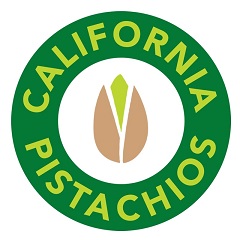
[ad_1]
Based on a recent survey of urban Indian consumers:
-
Nine out of 10 consumers are searching for protein-rich food compared to seven out of 10 global shoppers. -
The top four qualities consumers look for when buying snacks are (1) natural, (2) heart-healthy, (3) protein-rich and (4) energy-source, all of which come before satisfying cravings. -
Nuts have emerged as one of the most popular snacking choices, with 86% of Indian shoppers report having purchased them in a span of 6 months. -
Urban Indians read nutrition labels more than the global average, reflecting a growing trend towards informed purchasing. -
69% of urban dwellers surveyed have the opinion that plant-based protein is just as good as meat-based protein, exceeding the global average of 55%.
Wonderful Pistachios, the world’s largest grower and processor of pistachios and distributor of California Pistachios in India, released today, World Nutrition Day, the findings of a new global study that sheds light on the snacking habits of urban Indians. The study, commissioned with Material, a leading global research consultancy, included 10 countries and over 12,400 respondents, revealed a new behavioural trend that urban Indian consumers prioritize nutrition over taste when it comes to snacking. This growing preference for healthy snacking emphasizes the importance of good nutrition for overall well-being.
For the India market specifically, the study delved into the snacking habits of 2,415 shoppers across six Indian cities, which represented a population of approximately 35.9 million consumers. Remarkably, a majority of urban Indians (58%) reported basing their food purchasing decisions on nutritional benefits more than taste, exceeding the global average of 52%. Delhi and Ahmedabad lead with over 60% of urban shoppers preferring nutrition in their food. Bengaluru and Chennai follow closely, indicating a nationwide shift towards smarter snacking preferences. In India, Millennials and Gen Z are leading the charge in health-conscious purchasing decisions, with more than 83% of consumers in these age groups reading nutritional labels before buying.
Indian consumers prioritize four key factors when shopping for nutritional snacks: natural (free of artificial colours and preservatives), heart-healthy, protein-rich, and provides energy. Nine out of 10 urban shoppers consciously seek protein-rich food options, compared to the global average of seven out of 10. The focus on nutrition has fueled the rise of nuts as a preferred snack choice, becoming essential to daily eating habits. The study found a staggering consumption of nuts, with 86% of Indian shoppers report purchasing them in a span of 6 months, compared to just 75% globally. With 6g of protein in per 28g serving, California Pistachios are a smart snack choice that provides benefits without sacrificing taste.
Shail Pancholi, Country Director, India, Wonderful Pistachios, commented on the study, saying, “Nuts were traditionally used as garnishes and consumed during festivals, but have now become a popular snack in India, indicating a notable shift in dietary habits. Pistachio consumption in India has doubled in the last six years, as consumer awareness of the nutritional benefits that pistachios offer has grown. Consumers are discovering that pistachios are naturally cholesterol-free, rich in plant-based protein and dietary fiber, and provide over 30 different vitamins and minerals.”
Interestingly, the study found that nuts are the second most preferred snack among urban Indian consumers, with 64% of Baby Boomers and 59% of Gen Z prioritizing nutrition over taste when selecting food. This indicates a growing focus on health across generations, with Baby Boomers focusing on senior wellness and Gen Z reflecting the rise of mindful purchasing. Though on opposite ends of the age spectrum, these two generations take the lead in seeking protein-rich options, as well as preferring natural snacks.
Mumbai tops most of the consideration sets when choosing a snack. Residents opt for natural ingredients (35% vs. the national average of 30%), heart-healthy options (33% vs. 30%), and protein (33% vs. 29%). Chennai residents look for energy-boosting snacks (31% vs. the national average of 29%).
The fact that 69% of urban Indians surveyed have the opinion that that plant-based protein is just as good as meat-based protein reflects a positive shift towards varied dietary preferences. Pistachios are a good source of high-quality complete protein, containing all nine essential amino acids. A 28g serving of pistachios provides 6g of protein, which is 11% of the recommended daily allowance (RDA) according to FSSAI.
The Wonderful Pistachios study unveils a compelling shift in Indian snacking habits. Nuts are evolving from festive treats to a daily snacking staple, fueled by a nationwide preference for more nutritious options. The trend transcends generations, resonating with Gen Z and Baby Boomers alike, underscoring the growing importance of mindful eating in urban India. As consumers increasingly seek natural, heart-healthy, protein-rich, and energy-boosting snacks, the future of Indian snacking appears to be firmly rooted in nutrition and well-being.
Wonderful Pistachios
Wonderful® Pistachios is the world’s largest grower and processor of pistachios, with a global presence in over 70 countries. As a vertically integrated operation, they are experts in every step of the process from tree to shelf, ensuring the highest-quality product every time. In tandem with its Grower Partners, Wonderful Pistachios harvests 125,000 sunny acres (50,000 hectares) of land in California that receive warm days and cool nights, which work in harmony with the rich, natural soils to create the perfect growing climate for high-quality pistachios. They ship 600 million pounds (204 million kg) of nuts worldwide from their advanced processing facilities to ensure the highest standards are met. When it comes to pistachios, Wonderful® Pistachios expertise is unmatched in scale and capacity, paired with warehouses and sales teams worldwide that are well-equipped to provide support at every step of the way.
California Pistachios
California Pistachios are grown and distributed by The Wonderful Company, the world’s largest vertically integrated pistachio processor and marketer located in California’s Central Valley. California Pistachios are Non-GMO, providing a smart, healthy choice for consumers around the world. Sun-ripened in the moderate Mediterranean climate of California, these distinctively green nuts pack taste and contain antioxidants and over 30 different nutrients. California Pistachios in India are available under leading brands and private labels at retail outlets, grocery stores, and online platforms.
For more information about California Pistachios India, please visit www.b2b.wonderfulpistachios.com
[ad_2]
Source link
Press Release
Singapore Prepares Ahead to Leverage Artificial Intelligence for a Better Future
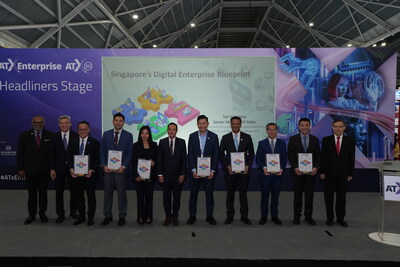
[ad_1]
SINGAPORE, May 31, 2024 /PRNewswire/ — Senior Minister of State for Communications and Information Tan Kiat How launched the Digital Enterprise Blueprint (DEB) at Asia Tech x Singapore (ATxSG) 2024 today. The Blueprint will enable SMEs to harness technology, optimise the way they work, and strengthen digital resilience and cybersecurity across the ecosystem. 50,000 SMEs are expected to benefit over the next five years through four key focus areas:
- Empower enterprises to be smarter by adopting AI-enabled solutions
- Enable enterprises to scale faster through cloud-based and integrated solutions
- Equip enterprises to be safer through improved cyber resilience
- Support enterprises to upskill workers to make full use of digital capabilities
Seven partners have come onboard to pledge their commitment, including Singapore Business Federation, Singapore Computer Society, SGTech, Amazon Web Services, Google, Microsoft and Salesforce.
In collaboration with IMDA and the TechSkills Accelerator for ITE and Polytechnics Alliance, SGTech is launching the Tech Apprenticeship Programme to expand the career pathways of graduates by providing access to industry apprenticeships that offer on-the-job training and development opportunities. Over the next two and a half years, SGTech aims to facilitate the placement of at least 300 apprentices who are fresh or mid-career professionals from polytechnic or ITE backgrounds, and drive the adoption of similar practices that promote more inclusive hiring and career agility.
IMDA and the Singapore Academy of Law (SAL) signed an MoU aimed at uplifting the legal sector’s productivity through the use of GenAI. As part of this partnership, GPT-Legal, a new large language model which is contextualised for Singapore’s legal sector, will be co-developed. The model will be integrated into SAL’s research platform LawNet, which is accessible by 75% of Singapore’s lawyers. SAL will also be penning an MoU with the National University of Singapore and AI Singapore to develop its AI capabilities and create a certification to recognise AI specialists in the legal profession.
Additionally, Tribe and Digital Industry Singapore announced a collaboration with NVIDIA to launch the Ignition AI Accelerator for AI startups to create and bring to market the next wave of advancement in AI solutions. This programme will nurture 15 high-potential startups, equipping them with well-rounded support covering business and technical needs. NVIDIA and Tribe will also collaborate with EnterpriseSG to offer qualified AI startups funding support through the Startup SG Tech scheme, and assist them through the IMDA Accreditation process.
Singapore hosted the final meeting of the UN Secretary-General’s Artificial Intelligence Advisory Body (AIAB) from 28-29 May. As part of the agenda, Singapore facilitated an engagement session between AIAB and the Digital Forum of Small States (Digital FOSS). Digital FOSS Fellows exchanged views with AIAB members on the topic of AI governance, particularly on the implications and challenges faced by small states. Through such efforts, Singapore aims to promote a more inclusive approach towards shaping global AI and digital governance.
Contact:
[email protected]
![]() View original content to download multimedia:https://www.prnewswire.com/in/news-releases/singapore-prepares-ahead-to-leverage-artificial-intelligence-for-a-better-future-302160193.html
View original content to download multimedia:https://www.prnewswire.com/in/news-releases/singapore-prepares-ahead-to-leverage-artificial-intelligence-for-a-better-future-302160193.html

[ad_2]
Source link
Press Release
One in Six Globally Concerned About Colorectal Cancer Screening Costs
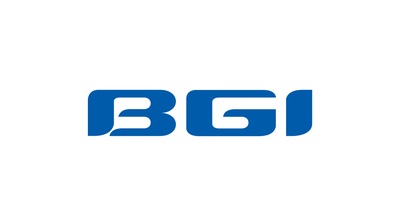
[ad_1]
SHENZHEN, China, May 31, 2024 /PRNewswire/ — By 2040, the burden of colorectal cancer (CRC) is projected to increase to 3.2 million new cases and 1.6 million deaths per year representing a 66% and 71% rise in new cases and deaths respectively relative to 2020.

To better address the global burden of CRC and reduce its impact, BGI Genomics has launched the second edition of its global CRC awareness report, covering 1,938 respondents from Brazil (306), China (367), Poland (300), Saudi Arabia (300), Thailand (362), and Uruguay (303):
CRC Screening Gaps Vary Globally: Nearly half (49.3%) of global respondents have never undergone CRC screening, with the highest proportions in Saudi Arabia (62.0%) and Poland (61.0%).
Preference for Fecal Testing Over Colonoscopy: Although colonoscopies are more recognized (33.4%), fecal tests at healthcare facilities are preferred (31.8%), reflecting a trend towards non-invasive methods.
Cost and Fear are Determinants of Screening Choice: Fear of colonoscopy (18.2%) and screening costs (17.7%) are major barriers to CRC screening. Poland (24.7%) and Uruguay (21.0%) show the highest fear of colonoscopy, while Thailand (24.5%) and Brazil (20%) indicate the most concern about costs.
Medical Advice and Family History Drive CRC Screening: Doctor’s recommendations are a major driver for CRC screening (30.5% globally), with Uruguay showing the highest adherence (44.1%). Additionally, those with a family history of CRC are more proactive in screening (64.5%), compared to the general population (35.0%).
Prof. Varut Lohsiriwat from Mahidol University offers his insights to this report. He suggested: “The essence of effective cancer screening lies in the acceptance and adherence of the patient to the screening method. The best screening method is the one that the patient accepts and adheres to because that’s the method that will actually benefit them.”
Dr. Zhu Shida, BGI Genomics Deputy GM, notes: “At BGI Genomics, we focused our efforts on developing advanced molecular biology testing techniques to close the gap [between acceptance and accessibility]. The ultimate goal is to transform colorectal cancer from a life-threatening disease into a manageable condition through widespread, early screening and intervention.”
For more region-level comparisons, access the full BGI Genomics 2024 State of CRC Awareness Report.
All data involved in this report come from the results of an online survey project conducted by BGI Genomics. It only surveys awareness related to colorectal cancer and does not involve personally identifiable data.
Logo – https://mma.prnewswire.com/media/1608027/BGI_Logo.jpg
![]() View original content:https://www.prnewswire.co.uk/news-releases/one-in-six-globally-concerned-about-colorectal-cancer-screening-costs-302159170.html
View original content:https://www.prnewswire.co.uk/news-releases/one-in-six-globally-concerned-about-colorectal-cancer-screening-costs-302159170.html

[ad_2]
Source link

 Fashion8 years ago
Fashion8 years agoThese ’90s fashion trends are making a comeback in 2017

 Entertainment8 years ago
Entertainment8 years agoThe final 6 ‘Game of Thrones’ episodes might feel like a full season

 Fashion8 years ago
Fashion8 years agoAccording to Dior Couture, this taboo fashion accessory is back

 Entertainment8 years ago
Entertainment8 years agoThe old and New Edition cast comes together to perform

 Sports8 years ago
Sports8 years agoPhillies’ Aaron Altherr makes mind-boggling barehanded play

 Press Release8 years ago
Press Release8 years agoUber and Lyft are finally available in all of New York State

 Sports8 years ago
Sports8 years agoSteph Curry finally got the contract he deserves from the Warriors

 Entertainment8 years ago
Entertainment8 years agoDisney’s live-action Aladdin finally finds its stars





